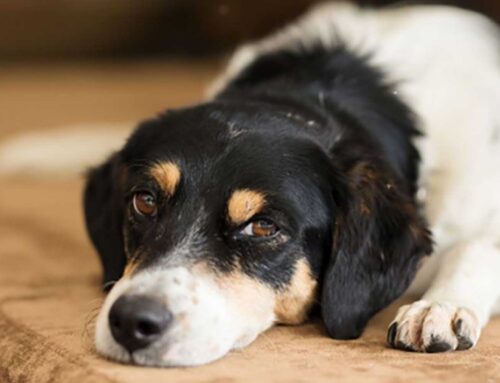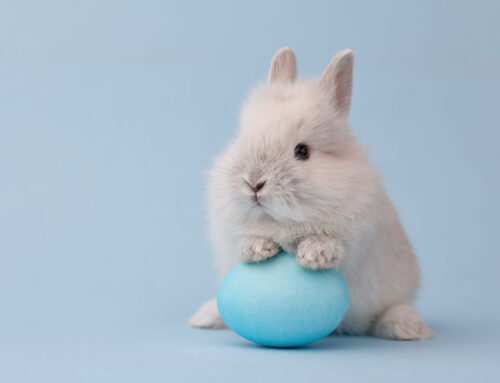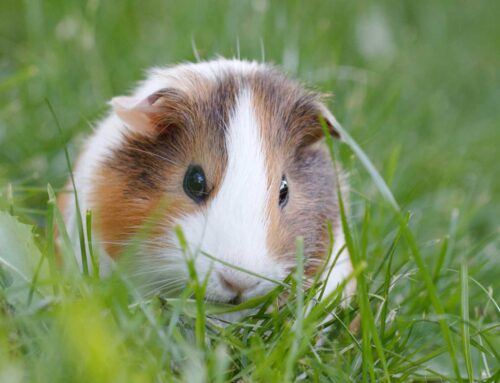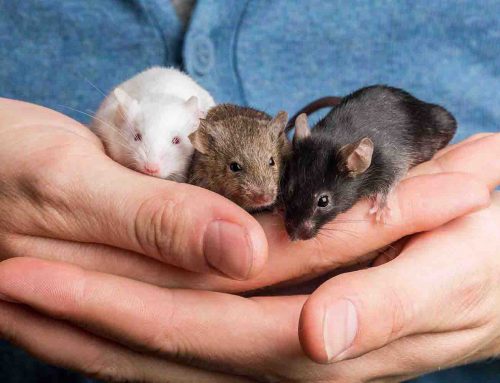Rabbit calicivirus in Australia – information provided by the Australian Veterinary Association
There are a number of RHDV strains pre Australia;
- RHDV 1 – Original virus released in 1995
- RHDV1A – Variant of type 1 isolated in Sydney in 2014
- RHDV1 – K5 Variant (release planned in March 2017)
- RHDV 2 – First recorded in mid 2015 in Australia, 2010 in Europe
- RCV – A1 Non pathogenic virus present in wild population
There has been some confusion between the new variant of RHDV1 (K5) and the discovery in 2015 of RHDV2 in wild and pet rabbits in the ACT and subsequently NSW, Victoria, SA, NT, Tasmania and WA. This new virus is called RHDV2, but is a different virus to RHDV1 and K5.
The pathogenic strains of the virus (RHDV1, RHDV1 K5 variant and RHDV2) are considered contagious and can be transmitted via; direct contact with infected rabbits, fomites, transmission via equipment and clothing, transmission by vectors including flies. Use of a parvovirus type cleaning protocol is recommended after suspicious cases.
Latest news
30 January 2017: Korean strain (K5) of Rabbit Haemorrhagic Disease Virus (RHDV)
During the first week of March 2017, a planned national release of RHDV1 K5, will go ahead.
In April 2016, RHDV1 K5 was approved as a Restricted Chemical Product by the Australian Pesticides and Veterinary Medicine Authority (APVMA).
RHDV1 K5 is a variant of the (RHDV1) virus released in 1996. Based on scientific evidence to date, the existing RHDV1 vaccine (known as Cylap®) is effective against RHDV1 K5. This evidence is based on a small pilot study undertaken by NSW Department of Primary Industries.
It is recommended that all domestic rabbit owners be reminded to vaccinate their rabbits prior to the release of RHDV1 K5 and/or ensure their animals’ vaccinations are up-to-date.
The Department of Primary Industries recommend that rabbit owners take the following extra precautions:
- Prevent direct and indirect contact between domestic and wild rabbits.
- Avoid cutting grass and feeding it to rabbits if there is the risk of contamination from wild rabbits.
- Wash hands, with warm soapy water between handling rabbits.
- Good insect control is also important and will help reduce the risks of introduction of both RHDV and myxomatosis. Insect control could include insect proofing the hutch or keeping the rabbits indoors.
- Infected rabbits should be isolated and disposed of in a manner that will minimise environmental contamination.
- All cages and equipment should be thoroughly cleaned and disinfected. Disinfectants that can be used to decontaminate any equipment include 10 % bleach, 10 % sodium hydroxide, or parvocide disinfectants. If using disinfectants material safety data sheets must be available and consulted, prior to use. Autoclaving will also kill the virus.
RHDV1 K5 is not a new virus; it is a Korean variant of the existing (Czech) virus already widespread in Australia.
RHDV1 K5 will be released across more than 600 sites within Australia and is being coordinated through the State and Territory Governments (see Table 1 for contacts).
| Table 1: State and Territory contact lead details. | |
|---|---|
| NSW | Local Land Services 1300 795 299 Dept. of Primary Industries 02 6391 3834 Quentin Hart (DPI) quentin.hart@dpi.nsw.gov.au |
| QLD | Dept. of Agriculture and Fisheries 13 25 23 Peter Elsworth Peter.Elsworth@daf.qld.gov.au |
| VIC | Dept. of Economic Development, Jobs, Transport and Resources 136 186 John Matthews john.matthews@ecodev.vic.gov.au |
| SA | Primary Industry and Regions South Australia Greg Mutze Greg.Mutze@sa.gov.au |
| TAS | Dept. of Primary Industries, Parks, Water and Environment 1300 368 550 Michael Askey-Doran michael.askey-doran@dpipwe.tas.gov.au |
| WA | Dept. of Agriculture and Food 1800 084 881 Susan Campbell susan.campbell@agric.wa.gov.au |
| NT | Dept. of Primary Industry and Fisheries 1800 084 881 Peter Saville Peter.Saville@nt.gov.au |
| ACT | Transport Canberra and City Services 13 22 81 Oliver Orgill oliver.orgill@act.gov.au |
RHDV2
RHDV2 does not pose a risk to human health and is not a notifiable livestock disease. However, the impact on pet rabbits and rabbit farms is high and it can cause death in young kittens (3-4 weeks) and a proportion of vaccinated adults. This new virus strain is distinct from RHD
V1, which was released in Australia in 1996 for the control of wild rabbits. It affects rabbits and hares only.
RHDV2 was first reported in France in 2010 and has been found in several other European countries. It was first detected in Australia in the Canberra area in May 2015.
Clinical signs of RHDV2 differ from the type 1 virus. RHDV2 affects kittens at a younger age (from 3-4 weeks) and clinical signs may be over 3-5 days before death. This is significant in general practice where unwell rabbits may present for vague clinical signs including; lethargy, inappetence, pyrexia and gut stasis. These rabbits will be infectious to other rabbits.
Clinical signs can include:
- pyrexia
- seizures
- hypoglycaemia
- anaemia
- significant increases in liver and kidney enzymes
- death
The current vaccine for rabbit calcivirus (Cylap RCD) is not fully protective against RHDV2. However, there is evidence of some cross protection between type 1 and type 2 viruses. Keeping domestic or pet rabbits’ vaccinations up to date is recommended to provide the maximum possible protection against this new strain. While an updated vaccine has been developed in Europe it is not currently available in Australia.
Until a specific vaccine is available for RHDV2, a revised vaccination protocol using the vaccine currently available in Australia has been suggested, though it is not known to what extent this will confer protection.
Current Vaccination recommendations follow and will be regularly updated.
Current Vaccination Recommendations
The AVA recommends that rabbits are vaccinated against RHDV (calicivirus) as follows:
Kittens: 4, 8, 12 weeks of age, then 6 monthly for life
Adults: 2 vaccinations 1 month apart, then 6 monthly for life
This protocol is off-label. Cylap is not registered for 6 monthly use or for use against RHDV2.
Based on studies conducted so far, giving the vaccine at more frequent intervals does not have negative health effects. Veterinarians need to advise owners that this protocol is off label.
Vaccination should always be administered to healthy animals, and a risk/benefit discussion with an owner is strongly recommended before vaccination of animals with chronic illness. Young animals are anecdotally more likely to show post-vaccination lethargy and inappetence. It is common to get a local reaction to the vaccine, especially if vaccination is not performed with a new needle, or if the vaccine is inadvertently given intradermally.
Note that any benefit of earlier and more frequent vaccination of kittens has to be balanced against the increased likelihood of any adverse event from the vaccine. The suggested off-label regime has not yet been validated in terms of increased protection or risk of adverse events, and feedback from veterinarians would be most welcome while we work to determine the most appropriate way to handle this situation.
Owners of pet rabbits and breeding stock are urged to implement strict biosecurity measures to protect their animals from infection, and talk to their vets about how best to achieve this.
Any veterinarian in NSW or ACT who suspects a domestic rabbit may have RHDV2 should submit a fresh frozen 1g liver sample (not formalin-fixed) to the State Diagnostic Veterinary Laboratory at the EMAI. See the August Biosecurity Bulletin link below for further information about submitting samples. Contact your Department of Agriculture in other states.
The Invasive Animals CRC, along with its partners, has a strengthened National RHDV Monitoring Program in place, which incorporates the monitoring of all RHDV viruses in Australia, including RHDV2.
Read more about RHDV2
For further information about rabbit biocontrol initiatives in Australia please visit the PestSmart website.
Additional information
- Vaccine product page
- Vaccine material safety data sheet
- NSW and ACT Biosecurity Bulletin on RHDV2 – 10 July 2015
- NSW and ACT Biosecurity Bulletin on RHDV2 – 25 August 2015
- Webinar: RHDV in Australia by Andrew Read (UPAV member benefit) – 26 October 2016






